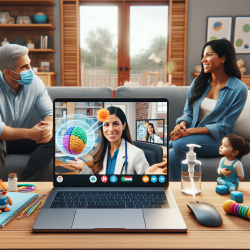Introduction
In the realm of speech-language pathology, understanding the cultural context of norm violations can significantly enhance the effectiveness of interventions. The research article, "Perceptions of the appropriate response to norm violation in 57 societies," offers valuable insights into how different cultures perceive and respond to norm violations. These insights can be pivotal for practitioners working with diverse populations, especially in online therapy settings like those provided by TinyEYE.
Understanding Cultural Variations in Norm Enforcement
The study, conducted across 57 countries, reveals both cultural universals and variations in how societies perceive the appropriateness of responses to norm violations. The research highlights three primary forms of informal sanctions: social ostracism, gossip, and direct confrontation. These responses vary in their effectiveness and appropriateness across different cultures.
For instance, in societies where physical confrontation is deemed less appropriate, gossip tends to be more acceptable. This finding underscores the importance of understanding cultural preferences when designing interventions for norm violations.
Implications for Speech-Language Pathologists
For speech-language pathologists, particularly those involved in online therapy, these insights are crucial. Here are some practical applications:
- Cultural Sensitivity: Tailor interventions to align with the cultural norms of the child’s community. Understanding whether a culture favors direct confrontation or gossip can guide how feedback is delivered.
- Effective Communication: Use culturally appropriate methods to address norm violations. For example, in cultures where gossip is more acceptable, indirect methods of communication might be more effective.
- Building Rapport: Establish trust by respecting cultural norms. This can lead to more effective therapy outcomes as children and their families feel understood and respected.
Encouraging Further Research
While this study provides a comprehensive overview, it also opens avenues for further research. Speech-language pathologists are encouraged to explore how these cultural insights can be integrated into their practice to improve outcomes for children. By doing so, practitioners can contribute to a growing body of knowledge that enhances the effectiveness of online therapy services.
Conclusion
Incorporating cultural insights into the practice of speech-language pathology can lead to more effective interventions and better outcomes for children. By understanding and respecting cultural variations in responses to norm violations, practitioners can enhance their communication strategies and build stronger relationships with their clients.
To read the original research paper, please follow this link: Perceptions of the appropriate response to norm violation in 57 societies.










